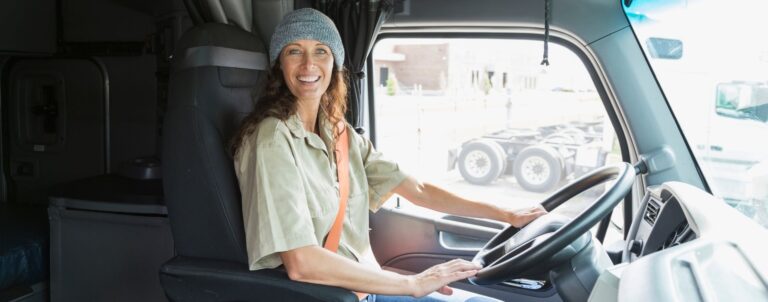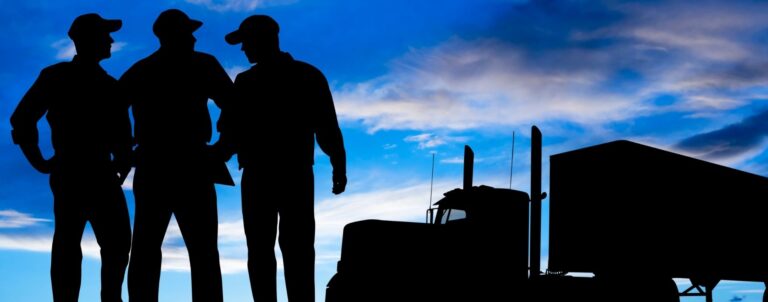Human trafficking is a global crisis, and the trucking industry is in a unique position to help combat it. With traffickers often operating in truck stops, rest areas, hotels, and fueling stations, professional drivers can serve as the eyes and ears on the road, spotting red flags and reporting suspicious activity.
In this episode of This Week in Trucking, Heather Fry, Director of Industry Training at Truckers Against Trafficking (TAT), shares how truck drivers can identify signs of human trafficking, take action safely, and make a real impact in the fight against modern-day slavery.
Episode Highlights
What Is Human Trafficking? Myths vs. Reality
Many people believe that human trafficking only happens through kidnappings, but in reality, 83% of victims actually know their trafficker. Traffickers use force, fraud, and coercion to manipulate and control victims, who are often lured in through false promises, threats, or emotional manipulation.
Common Myths About Human Trafficking
✅ Myth: Trafficking always involves kidnapping.
✅ Reality: Most victims are trafficked by someone they know, such as a friend, partner, or family member.
✅ Myth: Only women and girls are trafficked.
✅ Reality: Men and boys are also victims of both forced labor and commercial sex trafficking.
✅ Myth: Victims can leave anytime if they really want to.
✅ Reality: Traffickers use violence, debt, addiction, and psychological abuse to keep victims under control.
“Most people don’t recognize human trafficking because it doesn’t look like what Hollywood portrays. That’s why education is critical.” – Heather Fry
How Truckers Against Trafficking (TAT) Started
Truckers Against Trafficking was founded by a mother and her four daughters who realized that truck drivers are uniquely positioned to help. Since then, TAT has trained over 2 million trucking professionals to recognize and report human trafficking.
✅ Truck drivers are trained to be vigilant.
✅ They operate in places where trafficking happens, like truck stops, hotels, and rest areas.
✅ They can make a difference with a simple phone call.
How to Identify Human Trafficking at Truck Stops & Rest Areas
Truck drivers can play a huge role in saving lives by learning to spot red flags.
Signs of Human Trafficking
- A minor involved in commercial sex (this is automatically trafficking).
- Individuals who appear fearful, confused, or unable to speak for themselves.
- A group of women or minors being dropped off and picked up in a van or car.
- Signs of branding or tattoos, such as barcodes, dollar signs, or a trafficker’s name.
- Someone looking malnourished or showing signs of abuse.
“If you see something that doesn’t look right, trust your gut and make the call. It could save a life.” – Heather Fry
How to Report Human Trafficking Safely
Truckers should never intervene directly but can take action safely by reporting suspicious activity to the right authorities.
✅ If you witness a crime in progress: Call 911 immediately.
✅ If you suspect trafficking but aren’t sure: Call the National Human Trafficking Hotline at 888-373-7888.
✅ Gather details before calling: Take note of vehicle descriptions, license plates, locations, and suspect descriptions.
Law enforcement would rather receive a false report than miss an opportunity to save a life, so drivers should never hesitate to make the call.
How Trucking Companies Can Get Involved
TAT offers free training programs to help fleets, dispatchers, and trucking professionals recognize and prevent human trafficking.
How Fleets Can Participate
✅ Require TAT training for all drivers and employees.
✅ Distribute TAT wallet cards with hotline numbers and key information.
✅ Download the TAT mobile app for quick access to training and reporting tools.
“Truckers are America’s first line of defense on the road. The more drivers we train, the more lives we can save.” – Heather Fry
Final Thoughts: Truckers Can Help End Human Trafficking
Truck drivers have the power to make a real impact in the fight against human trafficking. By staying informed, recognizing the signs, and reporting suspicious activity, they can help rescue victims and put traffickers behind bars.
Take the training: https://train.tatnonprofit.org/
🚛 Want to make a difference? Download the TAT mobile app and take the free training today.
National Human Trafficking Hotline: https://humantraffickinghotline.org/en Call: 1-888-373-7888; Text: 233733
Canadian number: 1-833-900-1010 Canadian Human Trafficking Hotline: https://www.canadianhumantraffickinghotline.ca/
Full Transcript
Article By
Keep Learning












